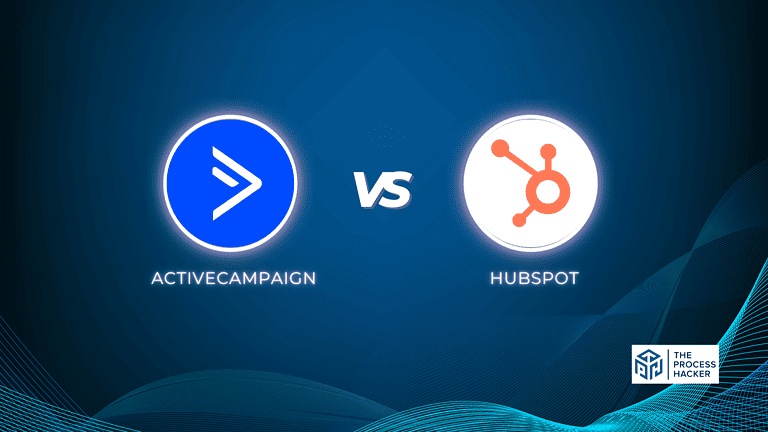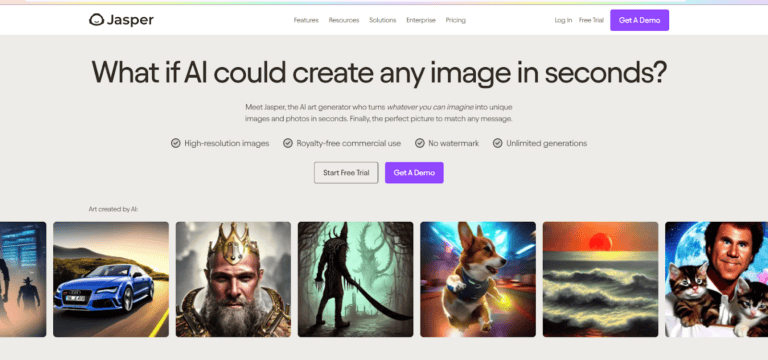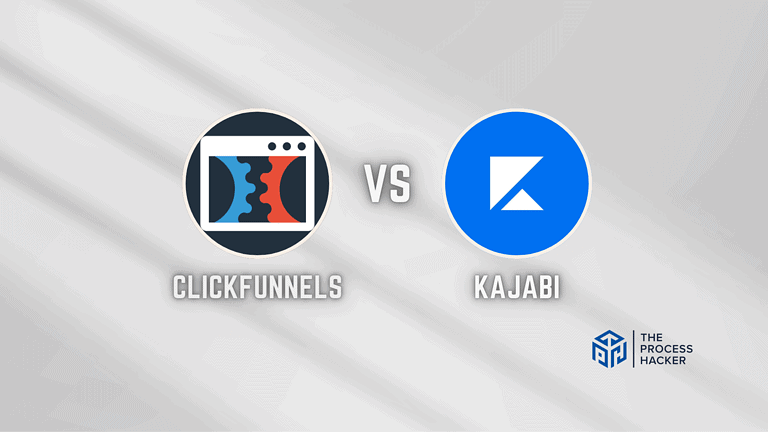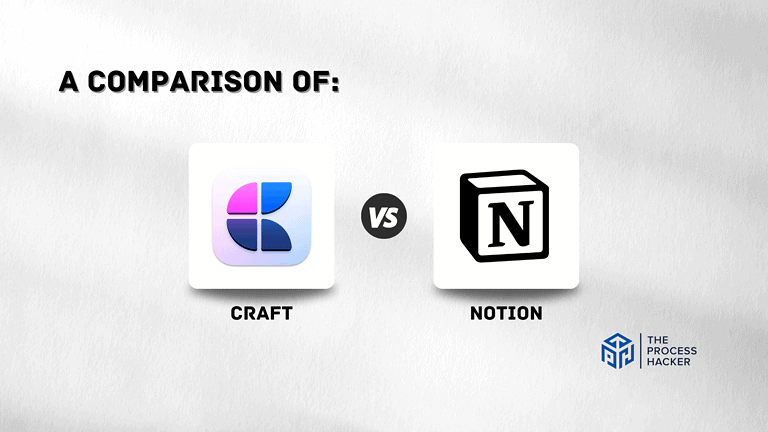Wrike Review 2024: Best Project Management Software?
Are you an entrepreneur needing a reliable and efficient project management system?
Do deadlines sneak up on you every month, leaving you to scramble for motivation?
If you purchase through our partner links, we get paid for the referral at no additional cost to you! For more information, visit my disclosure page.
Wrike is one of the best project management software, and it’s here to help your productivity skyrocket! Whether you’re managing individual tasks or entire projects with multiple stakeholders across various teams, Wrike can offer the tools entrepreneurs need.
With advanced features like dynamic timelines, shared team calendars, automated workflows, and insights into progress over time, Wrike can do a lot!
Let’s get in our comprehensive Wrike review to see if it’s right for your business.
Wrike Pros & Cons
When considering project management software, it’s essential to weigh the pros and cons against your specific needs and preferences to make the right decision. This Wrike review will help you achieve that.
Pros
Cons
Wrike Pros
- Facilitates Better Planning and Resource Allocation: With Wrike, planning projects becomes more intuitive, helping managers to allocate resources efficiently and avoid over or under-utilization of team members.
- Improves Task Delegation and Accountability: Assigning tasks is clearer, and tracking responsibilities is straightforward, which can foster a culture of accountability within teams.
- Promotes Data-Driven Decisions: The analytics and reporting tools can help managers make informed decisions based on real-time data, potentially leading to better outcomes.
- Supports Remote and Diverse Teams: Wrike is accessible from anywhere, indispensable for remote teams or organizations with a global footprint, ensuring everyone stays on the same page.
Wrike Cons
- Potential for Notification Overload: You will experience an influx of notifications, but this can be managed with customized notification settings to ensure that you only get alerted about what’s crucial.
- Can Appear Overwhelming for Smaller Projects: For teams with straightforward projects, the robust set of features can be more than what you need. However, this comprehensiveness is a boon for complex initiatives.
Quick Verdict – Is Wrike Worth the Money?
After spending an extensive amount of time reviewing and testing Wrike, the verdict is clear: Yes, Wrike is worth the money!
As a project management tool, Wrike stands out with its robust features and flexibility. It’s designed to adapt to your team’s specific needs, making it a valuable asset for large and small businesses.
Wrike excels in enhancing collaboration within teams and streamlining workflow management. It allows for real-time communication, file sharing, task delegation, and progress tracking, making it a comprehensive solution for project management.
Further, Wrike seamlessly integrates with other commonly used tools, such as Google Docs, Dropbox, and Slack, which creates a more connected and efficient work experience.
It’s worth noting that Wrike does have a steep learning curve due to its vast array of features. But once you’ve invested some time in understanding its functionalities, you’ll find it a powerful tool for your project management needs.
If you’re looking for a project management tool that combines flexibility, robust features, and enhanced collaboration, try Wrike today! It’s the solution you’ve been searching for!
Who is Wrike for?
You’ll love Wrike if:
- You’re a Project Manager Managing Multiple Projects: If you’re orchestrating multiple initiatives with various dependencies, Wrike’s robust project management tools can help you keep everything on track without losing sight of the details.
- Your Team is Remote or Globally Dispersed: If your team members are spread across different time zones or work remotely, Wrike’s collaborative tools will keep everyone connected, ensuring that distance isn’t a barrier to effective teamwork.
- You’re a Business Scaling Rapidly: If your organization is growing and you need a system that scales with you, adapting to increased complexity without missing a beat, Wrike’s scalable platform is designed for such expansion.
- You’re in a Creative Field Needing Structured Collaboration: If you’re managing creative projects that require brainstorming, feedback, and approvals, Wrike’s features enable seamless workflows from concept to completion.
You won’t love Wrike if:
- You Prefer Ultra-Simple, Bare-Bones Management Tools: If you’re someone who gets overwhelmed by too many bells and whistles and just needs the basics, Wrike’s comprehensive suite is more than you require.
- Your Projects Are Simple and Straightforward: If your project management needs don’t go beyond a simple to-do list, Wrike’s extensive set of tools could be overkill for your everyday tasks.
What is Wrike?
Wrike is a versatile cloud-based project management and collaboration tool designed to help teams streamline their workflows, manage projects efficiently, and collaborate in real time across departments and locations.
What is the key benefit of having Wrike?
The key benefit of having Wrike is its ability to centralize project planning and execution, thereby enhancing visibility, improving cross-functional collaboration, and increasing the overall efficiency of project delivery.
How does Wrike work?
Wrike provides a shared workspace where team members can plan projects, track work progress, assign tasks, transfer documents, and report on outcomes. It has various project management tools, including Gantt charts, Kanban boards, tailored workflows, and an intelligent analytics platform.
Wrike also integrates with various other project management tools to create a seamless ecosystem for managing all aspects of a project.
How is it different from competitors?
Wrike differentiates itself from competitors through its high customization options that cater to various business needs and its powerful automation features that save time on routine and ongoing tasks.
Furthermore, its intuitive interface accommodates both technical and non-technical users, making it accessible to a wide range of professionals. Additionally, Wrike stands out with its advanced reporting capabilities, which are user-friendly yet comprehensive enough to satisfy the needs of data-driven project managers.
Reasons I Recommend Wrike to Everyone
#1) Manage Complex Projects with Ease
Wrike transforms multi-project management as every project detail is trackable and manageable, regardless of complexity. You can use Wrike to manage projects with multiple stakeholders, dependent tasks, and careful resource management. And you can create a visual roadmap that your team can understand, streamlining the chaotic task list.
Results support these claims. Instead of overrunning on time and budget, projects were delivered efficiently with fewer miscommunications and delays. Wrike’s collaborative framework enabled clear and frequent client updates, which received rave reviews.
Controlling a project’s many moving parts reduces stress and lets you focus on strategic decision-making rather than firefighting.
#2) Foster Team Collaboration and Transparency
Wrike excels at team collaboration and transparency, which results in breaking down silos and improving team communication. Wrike’s real-time task and project updates and discussions demonstrate this benefit.
Team members can quickly see who is responsible for what, task statuses, and bottlenecks. Watch as the number of internal emails and meetings needed to inform everyone will decrease significantly.
#3) Customize to Fit Your Workflow
A one-size-fits-all approach seldom works for project management, and this is where Wrike shines with its high level of customizability. You can set up custom workflows, fields, and reports to match your processes, not vice versa.
The ability to tailor the platform to different project types—from marketing campaigns to software development sprints—was invaluable to my growing business operations.
Wrike can seamlessly integrate with your existing processes. You can set up custom workflows that match your project phases and make onboarding into new projects faster a breeze.
What You Might Not Like about Wrike
#1) Complex Pricing Model
One of the issues that you will need help with Wrike is its complex pricing model. While the tool is powerful and versatile, figuring out which plan and add-ons suit your needs and budget can be challenging.
After researching the product, the best one for most teams is the Wrike Business Plan. And, if you do need to adapt the pricing model, it can work for businesses of all sizes.
#2) Not Ideal for Beginners
Wrike’s extensive features and customization options are excellent for managing complex projects. However, they can be overwhelming for beginners or smaller teams with simpler project management needs.
As a beginner, I found the learning curve to be steep. It took me a while to understand how to use all the features effectively. However, once I got the hang of it, managing projects in the software became significantly more efficient.
Wrike Pricing
Wrike offers a flexible pricing scheme starting at $9.80 per user per month, with a free trial available for those looking to explore its features. For more comprehensive needs, there are Team, Business, Enterprise, and Pinnacle plans, with detailed pricing available upon request to suit the scale and specificity of your organizational needs.
Wrike: Key Features Breakdown
Let’s break down the key features of the app and delve into the details of each in this Wrike review:
Basic Project Management Tool Features
At its core, Wrike excels at providing the essential project management solutions necessary for effective project management. This includes task assignments, deadline tracking, and status updates. These features form the backbone of any portfolio management, allowing team members to clearly understand their responsibilities, deadlines, and the progress of their tasks.
Wrike stands out in its seamless integration and user-friendly interface. The task assignment feature allows for easy delegation of responsibilities. Deadline tracking ensures all tasks are completed within the stipulated timeframe, and status updates provide a real-time overview of project progress.
Wrike’s primary project management tool features have significantly improved the efficiency of my ability to manage projects. Assigning tasks will be a breeze, and the ability to track deadlines ensures that projects remain on schedule. The real-time status updates are invaluable for keeping your team informed about the current progress of tasks, reducing confusion, and enhancing collaboration.
Task Management
Task Management allows you to create, assign, prioritize, and track tasks within a project. It offers a visual timeline like Gantt charts for each task, giving a clear overview of the project’s progression. You can add descriptions, attach files, set due dates, and even tag other team members to tasks.
Wrike’s task management stands out because of its flexibility and detail-oriented approach. You can break down larger tasks into subtasks, making it easier to manage complex projects. The visual timeline, known as the Gantt Chart, not only keeps track of individual tasks but also shows dependencies between tasks.
Wrike’s Task Management can significantly improve your project-handling efficiency. The ability to break down tasks and track them individually helps in managing your workload and meeting deadlines. The Gantt Chart is particularly helpful in visualizing the project timeline and dependencies, which ensures smoother execution of your tasks.
Workflow Automation
Workflow Automation allows you to set up automatic triggers and actions for your tasks and projects. This means you can automate routine processes like task assignments, notifications, status updates, etc. It reduces manual work and helps ensure consistency in your project management.
Wrike’s Workflow Automation stands out due to its customization capabilities. You can set up automation rules based on various criteria, making it adaptable to your team’s needs. This level of customization can significantly reduce the time spent on repetitive administrative tasks, allowing you to focus more on strategic tasks.
Workflow Automation is a tremendous time-saver. Automating routine tasks eliminated the need for constant manual updates and task assignments, improving efficiency. The customization options allow you to set up automation rules that fit perfectly with our team’s workflow, creating a smoother, more streamlined project management process.
Resource Management & Planning
Resource Management and planning allow you to plan and allocate your team’s time and resources effectively. It offers a visual workload view, enabling you to see who’s working on what, their capacity, and how resources are distributed across various projects.
Wrike’s Resource Planning and Management stands out due to its real-time updates and detailed insights. You can see at a glance if a team member is over or under-allocated, helping you balance workloads and prevent burnout. Plus, the ability to forecast resource needs enables you to plan, ensuring that your team has the necessary resources to meet project deadlines.
Wrike’s Resource Management and Planning feature can be instrumental in optimizing your team’s productivity. The visual workload view provides a clear picture of resource allocation, enabling you to redistribute tasks effectively when needed. The real-time updates can ensure that you stay on top of your team’s capacity and plan for future projects.
Integrations
Integrations allow the software to connect with other tools and platforms you use daily, creating a seamless workflow. It supports integrations with popular services like Google Drive, Microsoft Office, Slack, and Dropbox. You can access files, communicate with your team, and manage tasks without leaving the Wrike environment.
Wrike’s extensive compatibility with various third-party tools increases its versatility and adaptability. Whether you’re working with file storage systems, communication tools, or other project management platforms, Wrike strives to centralize your work processes.
Wrike’s integration features can enhance your workflow, so you can connect other tools you regularly use to Wrike. For instance, you can integrate Wrike with Google Drive, allowing you to share and access project files easily.
Advanced Security Features
Advanced Security Features encompass a range of measures designed to protect your project data and user information. These include data encryption key management, two-factor authentication, user access controls, and regular third-party audits to ensure compliance with global and industry-specific security standards.
Wrike’s security features are exceptional due to their comprehensive nature. Not only do they provide robust protection for your data, but they also give you control over who has access to what information.
Wrike’s advanced security features will ensure that your project data is well-protected. The user access controls are beneficial so that you can restrict access to certain information based on the user’s role or involvement in the project. This can not only improve the security of your projects but also increase trust among your team and clients.
AI Project Risk Prediction
AI Project Risk Prediction is a feature that employs machine learning to anticipate potential risks and delays in a project. Analyzing historical patterns and frequently occurring issues in your projects provides a comprehensive view of risk factors. This feature aims to ensure the timely and successful completion of projects.
The uniqueness of this feature lies in its predictive capabilities. It goes beyond traditional risk management tools by not just identifying but also predicting potential project risks. This anticipatory approach enables proactive risk mitigation, helping to prevent delays and keep the project on track.
This feature can enable you to stay ahead of potential issues, ensuring smoother execution of projects. For instance, you can identify patterns that can lead to delays so you can take preemptive measures. This not only improves the success rate of your projects but also reduces stress levels among your team, knowing that potential hurdles are being anticipated and addressed in advance.
Advanced Reporting & Business Intelligence
The Advanced Reporting and Business Intelligence feature allows you to generate detailed reports on project progress, performance metrics, team productivity, and more. It uses data analytics to provide insights that can help improve decision-making and optimize project outcomes.
Wrike’s reporting and business intelligence feature stands out because of its depth and flexibility. It offers customizable report templates and a variety of data visualization options, from simple pie charts to complex Gantt charts. This makes it easier to understand the data and derive meaningful insights. Furthermore, it promotes data-driven decision-making, which is essential for successful project management.
Wrike’s advanced reporting helps you keep track of project progress and team performance. The ability to customize reports means I can focus on the metrics that matter most to us. For instance, you can build reports to monitor task completion rates, which helps you identify bottlenecks and improve productivity.
The Business Intelligence feature provides deeper insights into your projects, which helps you make informed decisions and strategize effectively. Overall, these excellent project management features will significantly enhance your project management process.
Wrike Customer Service
Wrike’s Customer Service includes a range of resources and support channels to assist you. This encompasses a comprehensive help center with articles and tutorials, live chat support, and options for phone or email support. Moreover, Wrike offers personalized onboarding and training for teams, ensuring you can get the most out of the software.
The standout aspect of Wrike’s Customer Service is its commitment to user success. The wide variety of support channels ensures that you can get help in the way that suits them best. Furthermore, personalized onboarding and training go beyond traditional customer support, providing you with the tools to utilize the software effectively.
In my experience, Wrike’s Customer Service is excellent. Whenever you encounter issues or have questions about the software, the support team is responsive and helpful. The live chat is incredibly convenient, as it allows for real-time problem-solving. Lastly, the onboarding process helps you and your team get up to speed quickly.
FAQs about Wrike
Does Wrike provide analytics and reporting features?
Wrike offers a range of analytics and reporting features that provide insights into project performance, resource allocation, and productivity, among other metrics.
Is there a mobile app available for Wrike?
Yes, Wrike provides a mobile app for iOS and Android devices, allowing team members to stay connected and productive while on the go.
Does Wrike offer any industry-specific solutions?
Wrike offers solutions for various industries, including Wrike Marketing Insights, creative marketing teams, project management offices, and professional services.
What are the best practices for getting the most out of Wrike?
Best practices include thoroughly customizing the project management app to fit your workflow, using Wrike’s helpful resources, regularly reviewing project progress through its reporting tools, and leveraging its integration capabilities to streamline your work processes.
Final Verdict – to Buy Wrike or Not to Buy Wrike?
After thorough research and personal experience with the software, I confidently recommend Wrike as a top choice for project management software.
The platform’s robust feature set, including advanced reporting, AI project risk analysis, exceptional customer service, and seamless integration capabilities, make it an invaluable tool for large-scale and small businesses. It’s user-friendly, despite its comprehensive offerings, and the personalized onboarding and training ensure teams can quickly get up to speed.
While some argue that Wrike is a bit pricey and not ideal for beginners, its value in collaboration, efficiency, and data-driven decision-making justifies the investment. Moreover, the slight learning curve at the beginning is a small price to pay for the long-term benefits it offers.
So, if you’re looking for a mighty, flexible, and reliable project management solution, look no further than Wrike. It’s a worthy investment that can significantly enhance your team’s productivity and project outcomes.
Stay tuned for the last sections of our Wrike review, where we will explore alternative project management apps that better suit different needs and budgets.
Wrike Alternatives
If $9.80 to $24.80 is too much for you to stomach right now, or you need a different solution, you might like one of these other project management apps.
#1) Monday
Monday.com, compared to Wrike, takes a more visually oriented approach to project management with its color-coded boards and timelines. It’s ideal for teams who prefer a more visual and intuitive platform.
However, it will need to match the advanced reporting and AI project prediction capabilities that Wrike offers.
#2) Asana
Asana, another robust project management tool, excels in task management and team collaboration. Its easy-to-navigate user interface and flexible project views (list, Gantt charts, board, timeline, calendar) make it a popular choice.
However, Asana needs more depth of integrations that Wrike offers, making Wrike a superior choice for businesses heavily reliant on multiple software tools.
#3) Smartsheet
Smartsheet stands out with its spreadsheet-like user interface, which appeals to teams accustomed to working in Excel. It also offers robust automation features.
However, its interface is not as intuitive as Wrike’s, especially for teams new to project management software. Smartsheet is ideal for teams that prefer a spreadsheet-style approach to project management and who value powerful automation.
#4) Trello
Trello is a popular project management tool that allows users to organize their tasks, projects, and ideas in a visually appealing and easy-to-use platform. With its intuitive drag-and-drop interface, users can create boards for different projects and add cards with specific tasks, due dates, and members assigned to them.
On the other hand, Wrike offers more robust features and customization options, making it a great choice for larger teams or complex projects. Unlike Trello’s board-based approach, Wrike has more advanced features like time tracking, Gantt charts, and resource management.
#5) ClickUp
ClickUp is a project management software that offers a wide range of features, such as task management, time tracking, and team collaboration tools. What sets ClickUp apart from Wrike is its intuitive interface that allows users to customize their workspaces according to their needs and preferences.
It also offers a powerful automation system that streamlines workflows and saves time. ClickUp’s flexibility and user-centric approach make it an excellent choice for businesses of all sizes, from startups to enterprises.











